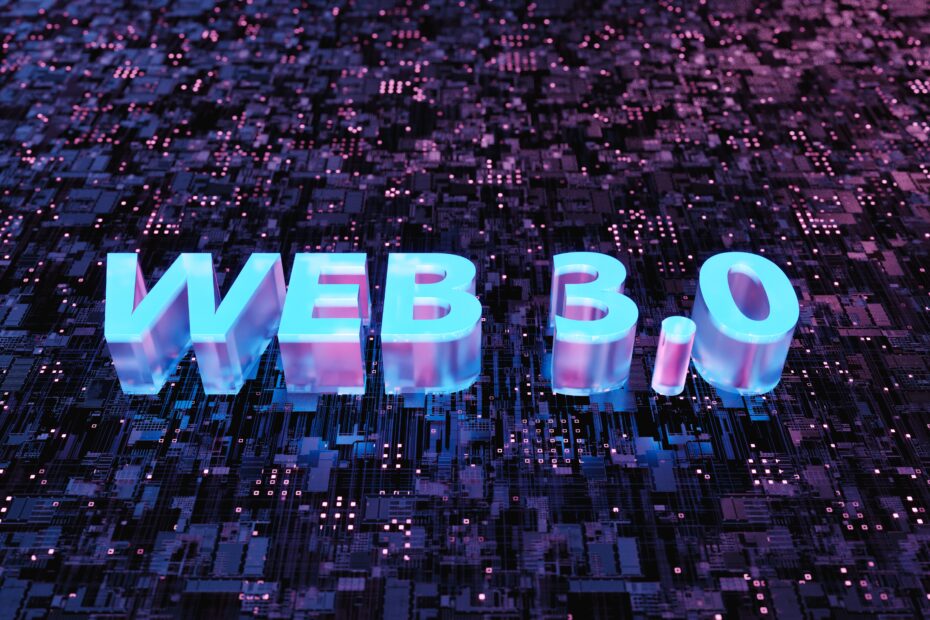Introduction
The World Wide Web (Web1), designed in the late eighties, has evolved significantly since its inception. It is now a fundamental platform for carrying out brand activities especially in the areas of marketing, communication and sales.
With the move from Web2 vs Web3, the relevance of the Web for enterprises is being pushed even further.
Web Versions
Web 1
The World Wide Web was initially considered a global hypertext aimed at connecting and making accessible the world’s information. This is what was then called Web1.
It did not take much for advertising to be integrated in web pages and for applications and services to be made available via a web browser.
Such a system was already very interesting for companies as they could use it to advertise and sell products.
Web 2
When social networks were created and rose in popularity, a major paradigm shift occurred. The content of such platforms was not provided by the platform owners, but rather from their users.
This was of great interest for brands as they had a place where customers and prospects were easy to reach. They could also leverage user knowledge and passion for their products, turning them into testimonials and indirect marketing tools. Now as we transition from Web2 vs Web3, yet more dramatic changes are taking place.
Web3
Web3 is the new variant of the Web which incorporates concepts such as decentralization, ownership, trust, native payments and anti-censorship. In contrast to its predecessors, Web3 relies on blockchain technologies. When comparing Web2 vs Web3, the latter allows you to build token-based economies within the application or service.
Web3’s creators envisioned its content as not belonging to the giant internet players, like in Web2. It instead belongs to the users, the people who have generated it.
Web3 and Brands
Using technology such as blockchain, Web3 introduces new ownership, incentives and community models. It also facilitates new income sources and innovative business models, making the leap from Web2 vs Web3 quite dramatic indeed.
Digital Products for Virtual Environments
Web3 allows the creation of products that lead to new short- and long-term revenue streams for brands through smart contracts.
The metaverse is especially ideal for brands to demonstrate their creativity, innovation and latest offerings in virtual goods for consumers.
Last year Gucci released its first virtual sneaker, the Gucci Virtual 25, which can only be worn in virtual environments. This digital product would have been inconceivable only a few years ago, showcasing the development between Web2 vs Web3.
Similarly, using NFTs to digitally represent a company’s physical goods creates new opportunities to sell both digital and physical products.
By creating digital versions of physical products, brands expand their value into the metaverse through existing customers and new audiences.
Relationship with Customers
With Web3’s built-in transparency, accountability, and equity, brands have an opportunity to change the relationship between brands and customers. This heralds a powerful shift from consumers to stakeholders and from markets to community.
Brands can now imagine and experiment with new possibilities. They have to rethink hierarchical relationships between brand and consumer.
The value upgrade from Web2 vs Web3 unlocks consumer empowerment. Web3’s data sharing, portability and ownership allows consumers to become stakeholders in brands through digital assets, NFTs, tokens, achievements, etc.
Web3 also unlocks new opportunities that brands can use to create connections with consumers and communities. For example, NFTs can be used as a retention tool to build loyalty and forge community connections.
Additionally, Web3 makes it easier to attract a new generation of digital natives and early adopters. These forward-thinking pioneers seek more exclusive, immersive, and equitable relationships.
Tokens and Marketing
The progress made from Web2 vs Web3 allows for enhanced marketing possibilities based on the use of tokens. Tokens can be used to establish communities, reward customers, create loyalty programs, etc.
There are countless ways tokens can be implemented to engage or reward customers and build customer loyalty. For example, token-based loyalty programs may allow individuals to buy and sell their points or currency.
As a very recent example, Starbucks has announced a Web3-based loyalty program that integrates NFTs.
New Income Sources
Web3 allows the opportunity for increased revenue streams through the initial sale of digital goods and services.
But there’s also an opportunity to realize value as NFTs and other assets that are bought and sold downstream. This already happens in art and music, where the creator gets a royalty from every sale of their artwork. The creative world is being spurred on from Web2 vs Web3 thanks to these exciting developments.
Conclusions
Brands are currently watching, and some are already experimenting with, Web3 technology. They know it can have a significant impact on their future success. While the new marketing and sales opportunities Web3 can bring are evident, it is more difficult to grasp the change in relationship between brands and consumers.
The transition from Web2 vs Web3 is a major paradigm shift which empowers the consumer and turns them into stakeholders. New opportunities are unlocked, which brands can use to create connections with consumers and communities.
Now is the right time to explore this key field that will soon become a game changer.
______
